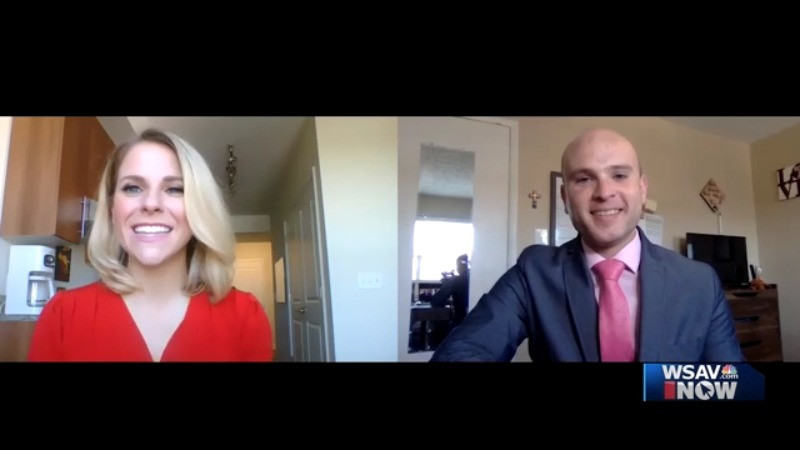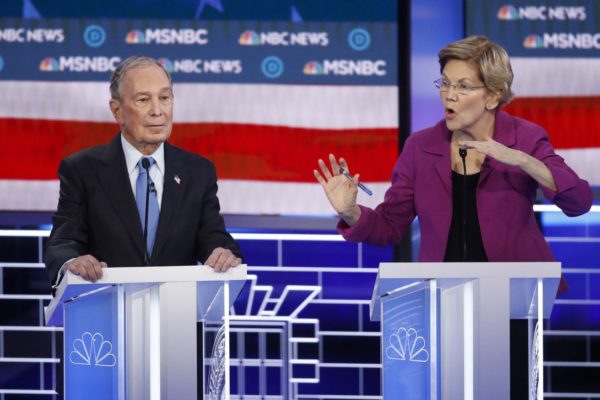Patti Russo says women running for public office should consider taking up golf if they want to raise campaign money.
Men “oftentimes are members of clubs – country clubs, golf clubs, tennis clubs. That’s where a lot of business happens, which is why there are so many more women out there taking golf lessons right now,” Russo said. “They see the importance of that skill. Because a lot of deals are closed on the golf course.”
Russo is executive director of the Women’s Campaign School at Yale University in New Haven, Connecticut, where students have included U.S. Sen. Kristen Gillibrand, D-N.Y.; U.S. Rep. Lauren Underwood, D-Ill.; and former Democratic congresswoman Gabrielle Giffords of Arizona. Russo also has been an instructor the past two years at the Women’s Campaign Institute in Fort Wayne sponsored by Advancing Voices of Women.
Campaign fundraising, she said, “continues to be one of the greatest hurdles” for female candidates, which is why her school spends one of its five session days on the subject.
“I think the No. 1 challenge in the area of fundraising is that women traditionally have not had the extensive networks that men do when they decide to run for office,” she said in a telephone interview.
Female candidates – and their female donor base – are making big gains. The nonpartisan Center for Responsive Politics reported in February that female donors gave more than $1.1 billion in campaign contributions in the 2018 midterm election. The center also said that, for the first time, among itemized contributions exceeding $200, women donated more money to female Democratic candidates than to male Republican candidates.
Still, women constituted just 37% of those who made itemized contributions, and they contributed only 29% of all itemized congressional contributions made in 2018, the center reported.
Female candidates “have a larger number of contributions but at a lower dollar level” than their male counterparts, Russo said. “Women are out there, working twice as hard, quite frankly, to raise the same amount of money, and oftentimes it’s the lower-dollar gifts that come in first.”
Jill Long Thompson has run for Indiana governor, the U.S. Senate and the U.S. House. Long Thompson, a Democrat who was living in Larwill, won a special election in 1989 in the northeast Indiana congressional district and was reelected in 1990 and 1992 before losing her seat in the 1994 election.
Her Republican opponent was always a man. Not counting the abbreviated race in 1989, Long Thompson was outraised in five of her seven contests, twice by huge margins.
Long Thompson teaches ethics at Indiana University’s Kelley School of Business and at IU’s School of Public and Environmental Affairs in Bloomington.
She said some people turned down her requests for contributions in her congressional campaigns by saying, “A Democratic woman is not going to win that district” – the emphasis on woman as much as on Democratic.
Fundraising took “discipline and persistence,” she said. “Allocating a reasonable amount of time regularly to make fundraising phone calls. And just because someone says no doesn’t mean they will say no next week.”
Her persistence paid off. In the 1990 election cycle, she raised nearly $754,000 and received 61% of the vote in a district that had chosen a Republican congressman in 16 of the previous 19 elections before she took office as Indiana’s fourth-ever female member of the House.
“I have been quite successful in some of my campaigns with fundraising, and I know a great deal of that came from people trusting that I would do what I said I was going to do,” Long Thompson said. Also, she said, “When voters believe you have a realistic chance of winning, they are more enthusiastic about contributing as well.”
And winning means more campaign cash.
“I found that once I started serving and people knew that I could win and had a good shot at winning reelection and that I had delivered on policy, that they were more willing to be supportive. But women do not have the same kind of high-income networks that men have,” she said.
No woman since Long Thompson has won the northeast Indiana congressional seat, and only a few have run – Democrat Maria Parra in 2004, Republicans Liz Brown and Pam Galloway and Libertarian Pepper Snyder in 2016 and Democrat Courtney Tritch in 2018.
Parra and Snyder attracted little money, and Brown and Galloway largely self-financed their primary-election campaigns. But Tritch raised $860,000 before losing the general election to freshman Republican Rep. Jim Banks, who raised about $1 million and received nearly 65% of the vote.
“In the beginning, women were more willing to stand up than men were” as campaign donors, Tritch said. “ … Obviously this is a very Republican area, and there were Republican men that supported me, but they were not as ready to go out on a limb for their beliefs as women were.”
Typically, she recalled, if a married couple contributing money to Tritch had a joint checking account, the wife would sign the check.
“The phrase I heard the most was ‘Republican retaliation’ – that ‘if my name is on that, I will get blowback,’” Tritch said about potential GOP male donors.
But in the political climate of 2018, she said, “women were really fed up, and they were willing to show that with their pocketbooks.”
A record 102 women were elected to the House that year.
Tritch disputes the notion that it is harder for a woman to raise campaign funds because of gender, noting that she raised more money than Banks during three quarterly financial reporting periods.
“We built such a great ground game that people came around. We ended up as the No. 1 candidate in the country for the highest percentage of in-district donations, by far,” Tritch said.
The Center for Responsive Politics says that 93% of Tritch’s contributions came from within her congressional district; the next highest rate in 2018 was 89%. Banks’ rate was 70%, and the median was 30.7%.
Russo cautioned female candidates against relying too much on female donors.
“What we have found is that when men helped raise money for female candidates early on in their runs, it helps them exponentially,” she said. “It’s kind of like the Good Housekeeping Seal of Approval – ‘Look at these men who are leaders in our community, they’re willing to make a financial investment in this candidate, maybe I should take a closer look at her.’”
Russo said the success of female congressional candidates in 2018 and the high-profile Democratic women running for president in 2020 will generate even more female candidates for elected office.
“That’s going to inspire more women. They are going to look at these women and say, ‘Wow, if they can do it, I should try it. I want to do it, too,’” Russo said. “We’ve been seeing a surge of women contacting our school for not only our five-day sessions but our one-day sessions.”
Those women are being taught how to raise money.
“Your ability to raise money well will definitely have a major, major impact on your ability to run an effective campaign,” Russo said. “Because the business of politics – and it is a business – is very expensive. As a result of that, you have to find a path for yourself where you will feel confident and comfortable asking for people to make an investment in you.
“’Here is what I believe. Here is my mission and my goal for our community. Will you partner with me?’ That’s very, very powerful language, versus ‘Will you help me?’ I don’t think ‘Will you help me’ works for women,” she said.
“Women have to achieve a certain level of comfort and confidence in asking for money,” Russo said.
bfrancisco@jg.net






